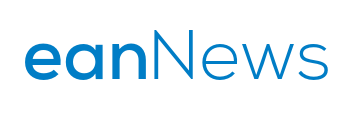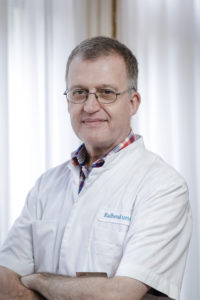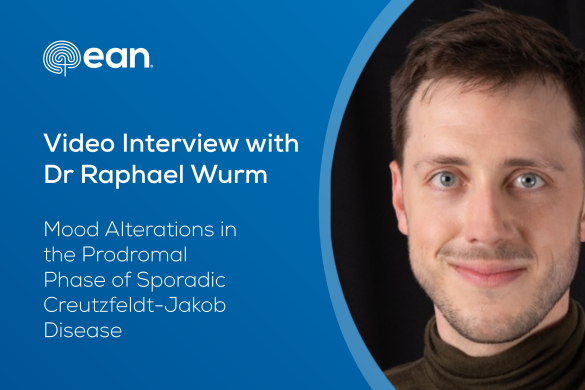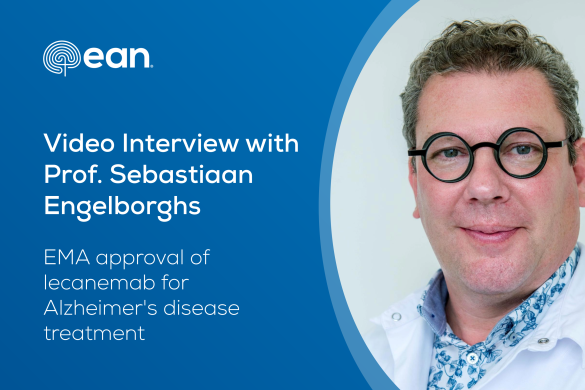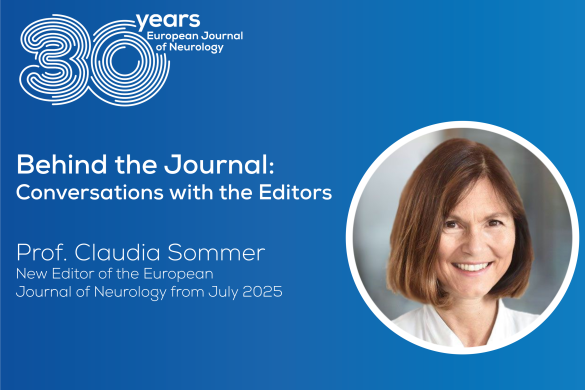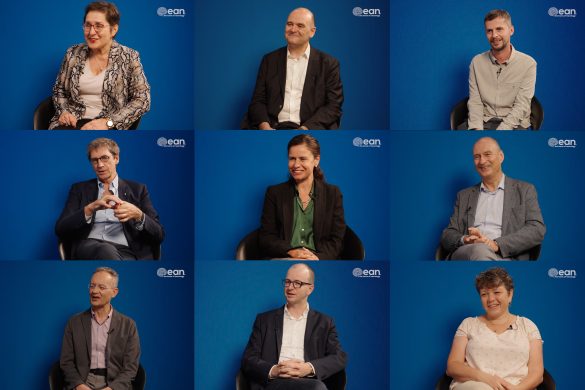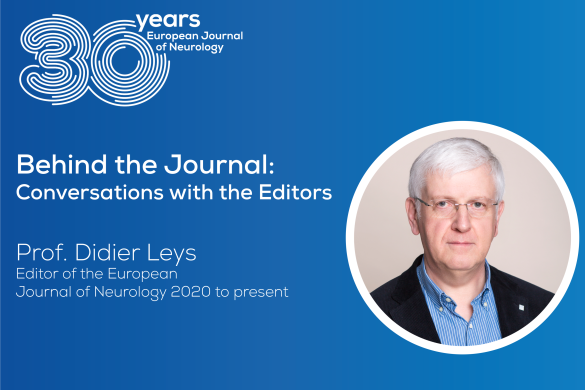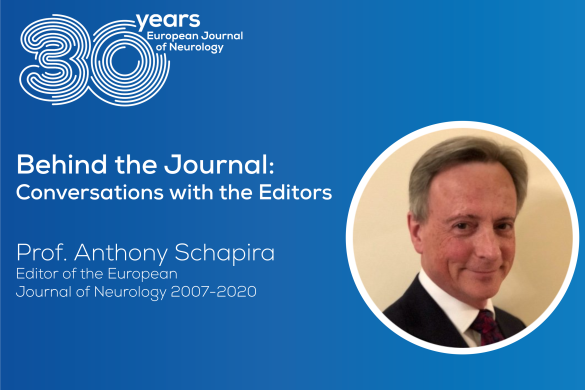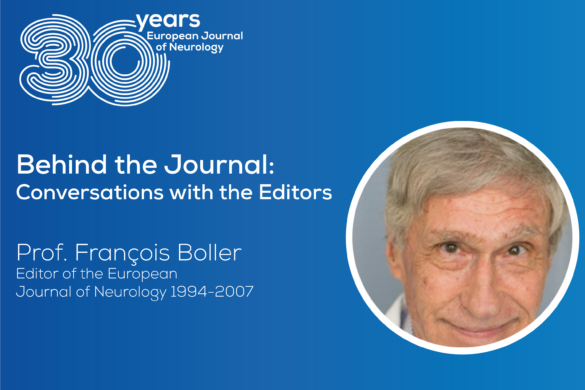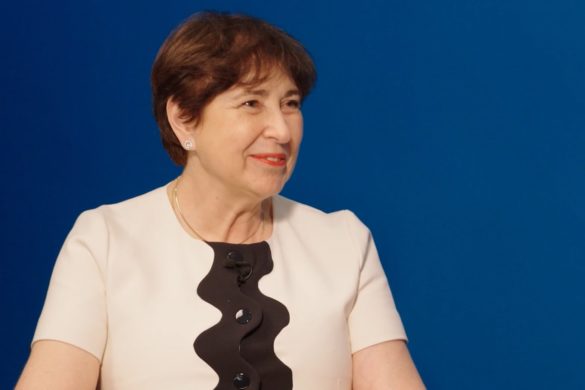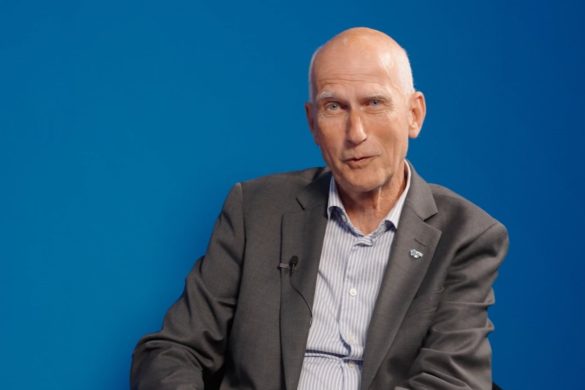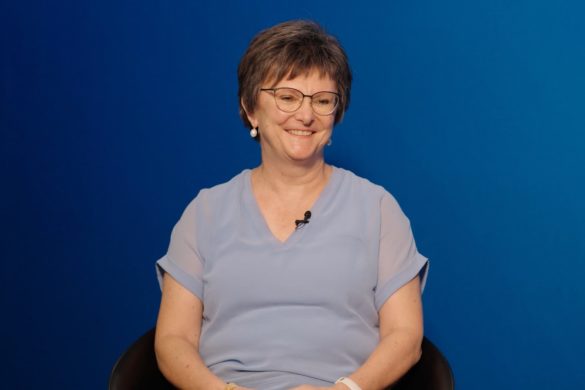Interview by Prof. David B. Vodušek
Prof. David B. Vodušek (DV): The European Association of Neurosurgical Societies’ structure is somehow similar to that of the EAN as both societies have European member societies as well as individual members worldwide. Can you please illustrate to the EANpages readers how the EANS structures its work with the member societies?
Prof. Andre Grotenhuis (AG): Originally founded in 1971 as a federation of the national neurosurgical societies of Europe, the EANS embarked upon an individual membership programme some twelve years ago. We now have 39 member societies (plus two affiliate societies) and just under1500 individual members. Whilst it is sometimes easier to interact with individuals than with groups, our national societies play a vital role in our activities. Firstly, each society has the right to provide two delegates to our Annual General Meeting, at which all significant decisions regarding the association are made. Whilst delegates of the individual members and members of the Board also have voting rights, our constitution provides that these two groups can never outvote the national society delegates. It is our national societies that bid for the right to host our annual congress; the location has never been centrally determined, and there are no plans to change this. Moreover, they are instrumental in proposing speakers for our congresses and educational courses, and in contributing to our Europe-wide registry of clinical trials. We also produce a monthly newsletter, in which member societies have the opportunity to publicise their events and initiatives.
DV: The EAN, as a society covering “general neurology,” has many partner societies dealing with particular neurological fields, often called “sub-specialties”. Is there a similar situation in neurosurgery, and how do you deal with this?
AG: Very much so! There are numerous neurosurgical sub-specialties, and the EANS has for some years had in place sub-specialist Sections, which have substantial independence, arrange their own events, educational courses and other initiatives and provide speaker suggestions for our various congresses and educational events. The majority of sub-specialties also have their own, increasingly active, niche societies. Whilst we don’t deal directly with these sub-specialist societies, we instead try to ensure that our Section Boards include representatives of relevant sub-specialist associations, an arrangement that has worked well to date.
DV: The EANS, just as the EAN, is a member of the European Brain Council. How do you see the added value of this membership to your society?
AG: To be completely honest, this is something that we’re struggling with. In general terms, the concept of a joint body, which represents all neuroscience organisations, acting as lobbyist to create more awareness of neurological disease and more funding for research in this sphere is definitely worthwhile. In practice, however, it is almost inevitable that psychiatry and neurology will dominate – simply as a result of the much larger number of patients affected by psychiatric and neurological conditions. As a consequence, neurosurgical diseases are often neglected despite the EBCs is having successfully raised awareness for other brain-related disease.
DV: The EAN aims at establishing direct cooperation with neurology related scientific associations Europe wide. Neurosurgery is closely linked to neurology in taking care of several groups of patients. Do you see a need or potential for a more direct cooperation between both societies?
AG: I perceive neurosurgery and neurology as two entwined fingers – you can’t have one without the other. I work in the Netherlands and am concerned about the fact that neurological residents will soon be permitted to omit a neurosurgical rotation from their neurological training. There are more and more overlaps and common ground between the disciplines, particularly in areas such as pain, movement disorders and stroke.
I believe that there is definitely potential for a more direct co-operation between our two societies (which, going back to the previous question, might to some extent enable us to fulfill effectively the lobbying role currently undertaken by the EBC). A neurologist, Michael Weller from Switzerland, will in fact deliver one of the keynote lectures at our forthcoming EANS 2016 congress in Athens and there is significant scope for exchange of speakers, particularly at some of our subspecialist meetings.
Before implementing any such co-operation, however, we would need to get to know each other – at the moment, I don’t know a single officer of the EAN personally! Perhaps we could arrange a meeting between the EAN and EANS Board as a first step in exploring a potential co-operation!
Prof. Grotenhuis I thank you for this very informative interview and wish you and EANS further success.
David B. Vodušek, Chair, EAN Liaison Committee
More on Prof. Grotenhuis can be found at: http://www.nccn.nl/nccn-en/news/biography_prof_grotenhuis_at_eans_website
